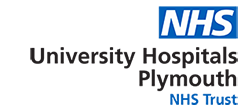Neurophysiology

The Neurophysiology department is located on level 7 at Derriford Hospital and is well signposted from the stairs and lifts.
The team consists of a Consultant Clinical Neurophysiologist, professional clinical physiologists, trainee clinical physiologists, a health care assistant and clerical and secretarial staff.
Neurophysiology is a diagnostic service which offers investigations of the central and peripheral nervous system as well as of skeletal muscles. Tests are mainly non invasive and may be used on people at any age and with very varied conditions. Most of the tests involve recording and measuring electrical activity from the brain, spinal cord, peripheral nerves or muscles. The recordings are performed by application of electrodes to the head, body or limbs. There are no after effects from these tests and generally, no medication is needed for the test to be done.
The department offers the following services:
- Electroencephalography (EEG)
- Evoked Potentials (EP)
- Electromyography and Nerve Conduction Studies (EMG and NCS)
- Ambulatory EEG
- EEG/Video Telemetry
- Continuous EEG monitoring
- Polysomnography
- Multiple Sleep Latency Tests
- Visual Electrodiagnostic Tests (VEDT).
Services are offered during 0830 - 1800 weekdays plus an on-call facility for EEG services during weekends, evenings and bank holidays. Both in and outpatients are catered for.
Electroencephalography (EEG)
An EEG may be requested on someone who has had a blackout in order to determine the nature of the attack. The doctors will want to know whether the blackout was a seizure (epileptic) or of some other cause such as a faint. The EEG may help to determine whether the attack was a seizure, whether or not it is likely to happen again and, if it was a seizure, what sort of epilepsy caused it. All these things are useful for the doctor to decide if, when and how to treat the patient.
During the test a technician will attach 23 fine wires to your scalp with sticky paste. These wires are connected to a recording machine and the machine records your brainwaves, usually for about 20 minutes but sometimes for a bit longer. Whilst the machine is recording you may be asked to keep your eyes closed for a while and possibly to do some deep breathing. You may also be asked to look at a flashing light. At the end of the recording the technician will remove your wires and you can go home.
You will probably find that you need to wash your hair afterwards, as there will be some sticky paste left behind where the wires were attached. You will not get the results of the test right away as the recording needs to be looked at in detail and a report written. The report will be sent to the doctor who will then discuss the results of the EEG and any other tests you may have had with you.
Evoked Potentials (EP)
EPs are used to check the nerve pathways to and from your brain and spinal cord. They can sometimes help doctors to find the cause of symptoms such as blurred vision, numbness of a hand or foot, dizziness or sudden hearing loss.
During the test, a technician will attach fine wires to your scalp with sticky paste similar to the EEG. When the wires are connected to the machine, you might need to watch a moving pattern on a TV, or watch a flashing light or you may have sounds played through headphones or you may have some small electrical pulses in your hands or feet. The brain responses to these stimuli will be recorded on the machine. This test can take much longer than the EEG - up to 2 hours.
It is quite boring but not particularly unpleasant except that again, it will be leave sticky paste in your hair which you will need to wash off afterwards. You will not get the results of the test right away as the recording needs to be looked at in detail and a report written. The report will be sent to your doctor who will then discuss the results with you.
Visual Electrodiagnostic Tests
These are special EPs which investigate the way the eyes are working. The tests involve having some wires attached around the head and eyes and having a very fine thread placed under the eyelids. This fine thread is able to record the electrical impulses from the back of the eye (retina). It is so fine and flexible that you will not notice it once it is in place. During the test you will need to look at flashes of light and for part of the test, you will be in darkness.
Electromyography and Nerve Conduction Studies (EMG and NCS)
EMG and NCS are used to study the nerves and muscles in the arms and legs mainly. For instance, if you have numbness or weakness in an arm or leg, your doctor may decide to ask for these tests.
During the test a doctor or technician will stick some wires on the skin of your arms or legs and will stimulate you with a small electric pulse. Sometimes the pulses will make your hand or foot twitch.
Recordings and measurements of these twitches will help the doctor decide what is causing your symptoms. Sometimes, the doctor may use a very fine needle to look at your muscle activity. The needle is very thin so that it does not hurt. The test will usually take about half an hour but may take a bit longer in some cases. There are no after effects with these tests as there is no sticky paste to wash off afterwards.
Ambulatory EEG
This is a small EEG recorder which the technician will fit you with so that we can record your brainwaves for 24 hours while you go about your normal activities. People usually go home with this recorder.
The technician will apply the wires as for the EEG but instead or connecting them to the EEG machine, they are connected to a small recorder which you wear like a walkman, on a belt. The next day, you come back to the department and the technician will take the wires off again. Your brainwaves for the 24 hour period can then be analysed and this may help the doctor to make a diagnosis.
EEG/Video Telemetry
This is a prolonged EEG with video which is done while you stay on a ward in the hospital. Brainwaves and video are recorded continuously for up to 5 days. This enables the doctor to see exactly what happens during blackouts and seizures. Both brain activity and pictures of the attack are recorded to give the best possible information about the attack. This procedure is expensive and time consuming and is only done in certain cases and usually when other recordings such as EEG and ambulatory EEG have failed to help make the diagnosis.


